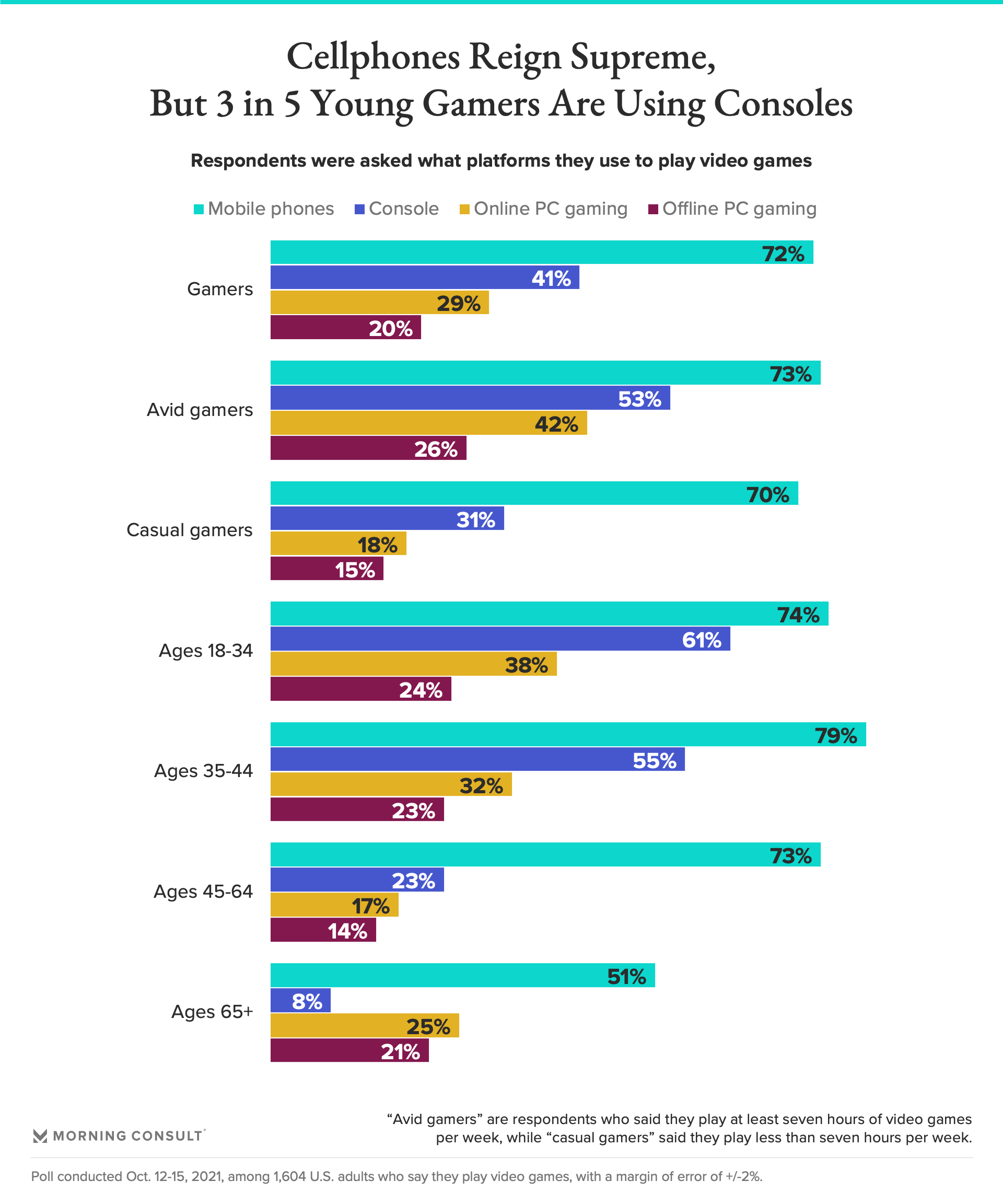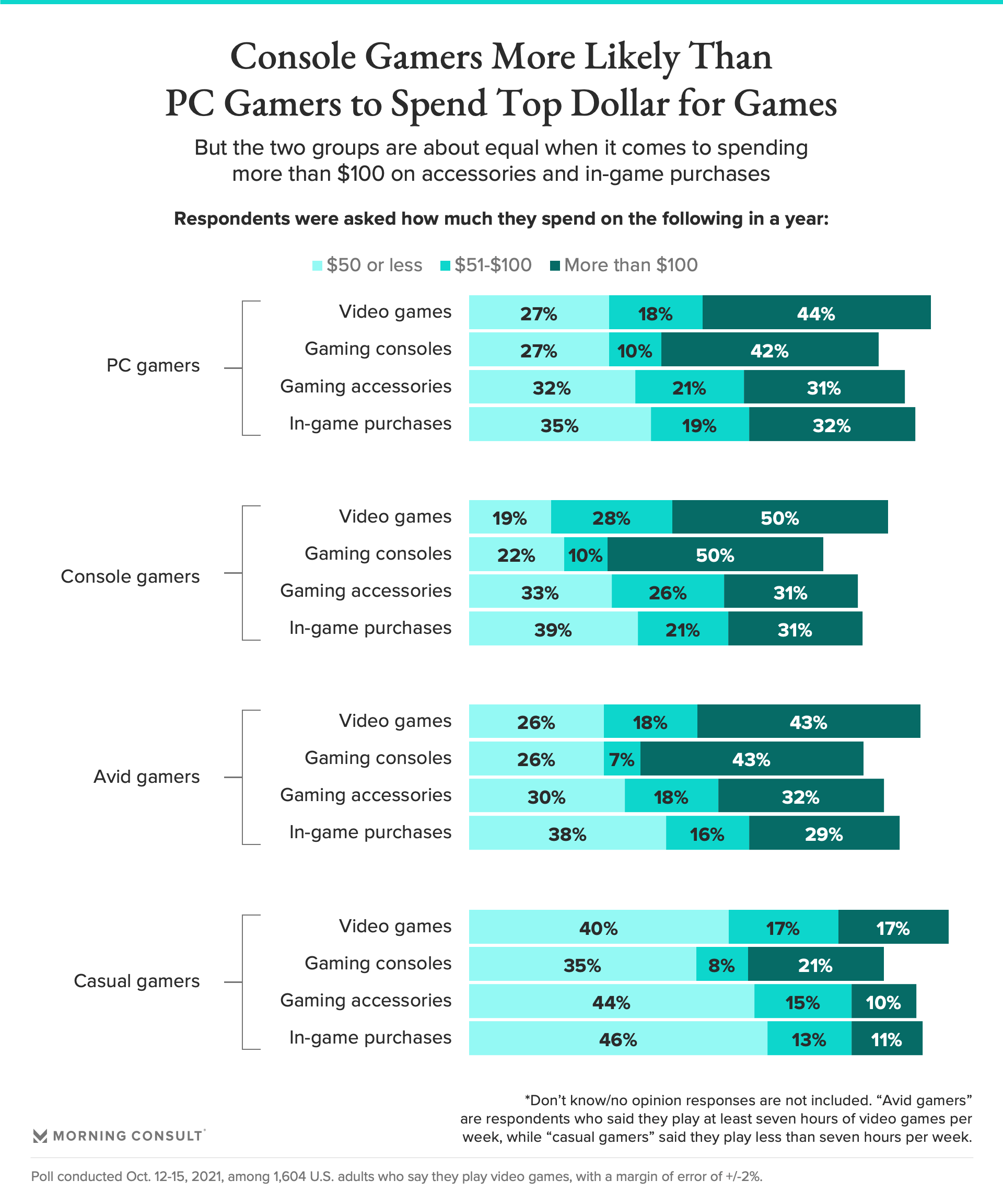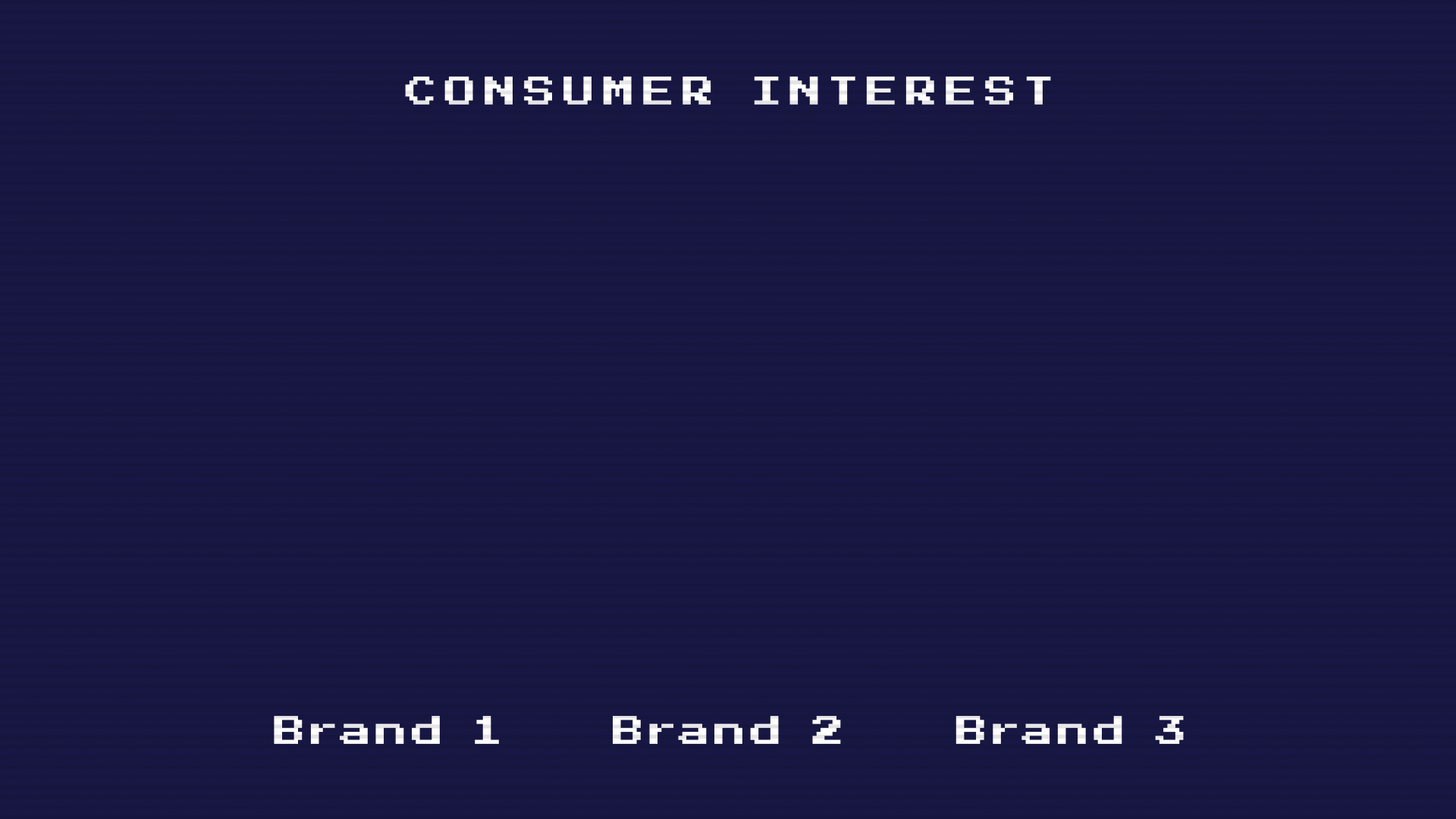Console Is Still King: Most Young and Avid Gamers Use Consoles Despite Next-Gen Scarcity

The State of Gaming
In the State of Gaming series, Morning Consult takes a closer look at the $200 billion global video game industry, polling gamers in the United States on their playing and spending preferences. The stories provide a snapshot of the average U.S. gamer, revealing what type of games they like to play (and how they like to play them), as well as what they think of some of the industry's biggest brands. As gaming only grows bigger, understanding gamers' habits will be critical in determining where the industry might be headed.
Other stories in the State of Gaming: EA, Rockstar Best at Capturing Gamers’ Interest | Video Game Adaptations Have a Poor Track Record. Gamers Want More Anyway | The Subscription Economy Has Officially Infiltrated Gaming
Ahead of the holiday season, and a year after the latest generation of Xbox and PlayStation consoles entered the market, the PS5, Xbox Series X and Xbox Series S are still incredibly difficult to acquire thanks to the global chip shortage. Some PS5 models (which retail for $400 or $500, depending on the model) are selling on eBay for $10,000 or more.
But even though new systems are scarce, Morning Consult polling shows that more than 3 in 5 gamers under 35 and just over half of avid gamers are using consoles — with many spending hundreds of dollars a year on their gaming habits.

How gamers are playing
- Adults under 45 are most likely to be playing video games regularly. Forty-three percent of adults ages 18-34 said they play at least seven hours of video games a week, marking them as avid gamers, while 44 percent of those ages 35-44 said the same.
- Mobile phones dominate the market. Majorities of all age groups and gaming frequencies said they use their cellphones to play video games, including at least 7 in 10 avid gamers, casual gamers (those who play video games six hours or less a week) and gamers under 45. And while just 47 percent of adults over 65 indicated they play video games, a slim majority of older gamers said they use mobile phones. The mobile games market is massive, with revenue from mobile games in the United States totaling $2 billion in September, per Sensor Tower data.
- Despite supply chain issues, gamers are slightly more likely to use consoles than to play games via PC. Forty-one percent of gamers said they use consoles, while 37 percent of gamers said they use PCs. More than half of gamers under 35, gamers ages 35-44 and avid gamers said they use consoles. Roughly 2 in 5 avid gamers play PC games online, while about a quarter are playing them offline.
- Puzzle and strategy games draw the most interest. About two-thirds of gamers said they’re “somewhat” or “very” interested in those genres, while the No. 1 choice of genre for avid gamers (75 percent) and console users (88 percent) was action-adventure. The best-selling game ever is likely “Minecraft,” a sandbox video game that has sold more than 238 million copies worldwide as of earlier this year. A third of gamers expressed interest in the sandbox genre, which allows players to freely roam virtual worlds.

How gamers are spending
- Roughly 3 in 10 gamers said they spend more than $100 annually on video games and consoles. About a fifth of gamers are spending that sum on accessories and in-game purchases, though pluralities spend $50 or less on those gaming items during the course of the year.
- Half of console gamers are spending top dollar on games and consoles. Console gamers were more likely than PC gamers or avid gamers to say they spend more than $100 a year on video games and consoles, but nearly a third of both PC gamers and console gamers said they’re spending an equal amount to purchase accessories or in-game add-ons.
- Gamers are most likely to download games for free. Roughly 3 in 5 gamers said they download games for free. But if they have to pay, they’re more likely to buy them online (42 percent) than to purchase a hard copy (27 percent). Fewer than 10 percent of gamers rent either virtual or physical copies of games, a method that was once popular at brick-and-mortar stores like Blockbuster in the 1990s.
- Even as some gamers shell out big money for industry products, most think prices need to change. While the video game industry raked in an estimated $174.53 billion globally last year, according to S&P Global, at least 70 percent of gamers said that prices for consoles and accessories need to change. That share rises to 3 in 4 among avid gamers, ranking above hot-button topics such as microtransactions, loot boxes and toxicity in online communities in requiring change.
The poll was conducted Oct. 12-15, 2021, among 1,604 U.S. adults who say they play video games, with a margin of error of plus or minus 2 percentage points.
Morgan Halvorsen is the senior standards editor at Morning Consult. @MorganHalvorsen4


